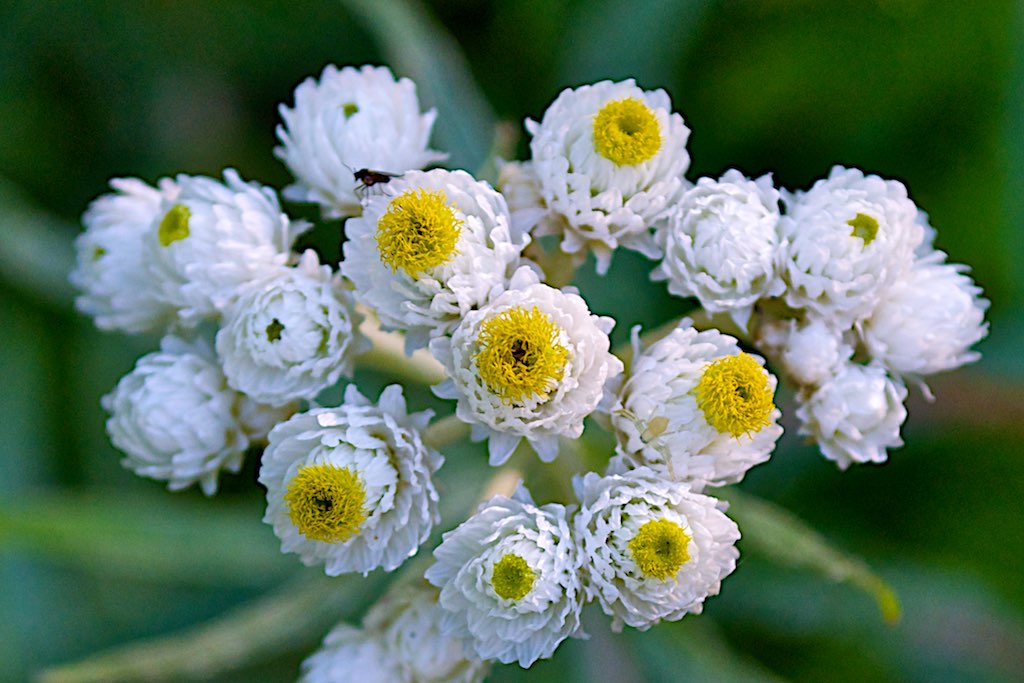mchec.org – Pearly Everlasting (Anaphalis margaritacea) is a hardy, perennial wildflower that can be found in many parts of North America. Known for its resilience and adaptability, this flower thrives in various climates and soil types, making it a favorite among gardeners and nature enthusiasts alike. Its distinct white or cream-colored flowers, which resemble small pearls, give it its common name. The flowers bloom in late summer and continue into the fall, attracting pollinators like bees and butterflies.
Physical Characteristics
Pearly Everlasting typically grows to a height of 18 to 36 inches (45 to 90 cm). It has lance-shaped leaves that are covered with fine, silvery hairs, adding a soft texture to the plant. The flowers themselves are small, but they appear in dense clusters, creating an eye-catching display. The flower heads are surrounded by papery, white bracts that resemble the look of pearls, which is where the flower gets its name.
Growing Conditions
Pearly Everlasting is a versatile plant that can adapt to a variety of growing conditions. It thrives in full sun but can also tolerate partial shade. The plant is drought-tolerant once established and can survive in poor soil conditions, though it does best in well-drained soil. Because it is a native wildflower, it is well-suited for xeriscaping (low-water landscaping) and can be planted in dry, rocky, or sandy areas.
Uses in Gardening and Landscaping
This flower is often used in gardens for its decorative appeal and its ability to attract pollinators. Pearly Everlasting is an excellent choice for wildflower gardens, cottage gardens, or naturalistic landscaping. It pairs beautifully with other wildflowers such as purple coneflowers, black-eyed Susans, and goldenrods. Additionally, it makes a fantastic cut flower due to its long-lasting blooms and ability to retain its shape and color after being dried.
Health and Medicinal Benefits
While Pearly Everlasting is not as widely known for medicinal uses as some other plants, it does have a history of being used by Indigenous peoples for various purposes. It has been used in traditional medicine to treat ailments such as colds, coughs, and digestive issues. The leaves and flowers can be brewed into teas or made into poultices to treat minor wounds. However, as with any medicinal plant, it is important to consult a healthcare professional before use.
Ecological Importance
In addition to its beauty, Pearly Everlasting plays a role in supporting local ecosystems. The plant provides nectar for bees, butterflies, and other pollinators, which are crucial for maintaining healthy plant populations. Its seeds are also a food source for birds, further contributing to the biodiversity of an area.
Conclusion
Pearly Everlasting is more than just a beautiful flower—it is a hardy, functional, and ecological asset to any garden or natural landscape. With its striking appearance, adaptability, and contribution to pollinator health, it is a flower worth considering for your garden. Whether you are looking to add visual interest, support local wildlife, or enjoy a unique, low-maintenance plant, Pearly Everlasting is a wonderful choice.

